The Founding of Moon Publications: For the Love of Travel
Publishing is called the “accidental profession” for a reason. Like many publishers who never purposefully intended to become makers of books, I never set out to be a publisher. Often we don’t pick our professions; they are decided for us by the choices we make or the places we go. Publishing is also called the “gentleman’s profession” because we like to think of ourselves as following a higher calling guided by noble principles and fine manners. That might be so, but publishing is a high-risk, hard-nosed, intensely competitive business.
In my case, my love and experience of travel was to evolve into a guidebook publishing company. It all began in the early 1970s when I stumbled upon Indonesia completely by accident. It was just the next country to visit on my travels around the world. Recalling my travel experiences through the islands, I stapled together six mimeographed pages of notes and crude handmade maps, which I sold on the sidewalks and in the flea markets of Australia.
This rudimentary publication was the genesis of a whole line of independent travel guides. It also led to my whole professional life writing about this maddening, fascinating archipelago, culminating two decades later in the seventh edition Indonesia Handbook, a tree-killing behemoth of more than 1,000 pages and the first comprehensive guidebook published on Indonesia in the post-war period.
Though I grew up in Wellesley, Massachusetts, an upper-class bedroom community 12 miles west of Boston, I am not to the manor-born but the son of an immigrant sign painter from Nova Scotia. The most valuable gift my father gave me was to give me no help in my studies, job searches, higher education, or any other kind of start in life, qualities that were to serve me well in my future traveling life and in my as yet undecided profession.
I was always a scribbler. I got my love of books from my mom, who I remember curled up on the sofa in the living room plowing through impossibly thick Thomas Wolfe and John Updike novels. She gave me the best piece of advice I’ve ever received about the craft: make your writing clear so people can understand you.
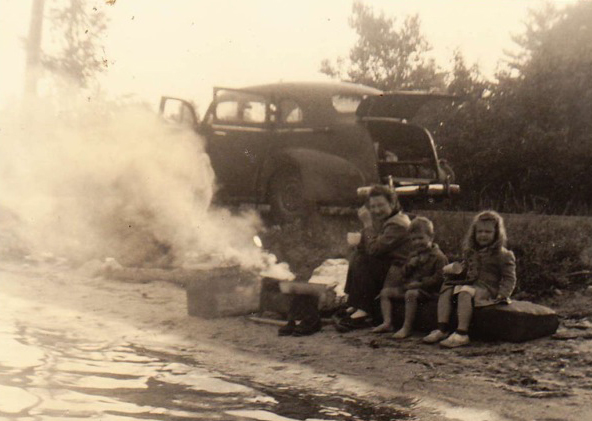
Travel got into my blood early. My first road trips were around eight years old on what we call “beer nights.” My dad would wake me up at 3 o’clock in the morning, pour coffee down my throat, and we’d fly away into the night with me often driving on his lap. We’d wind up the next morning in northern Maine woods, in Amish country of far western Pennsylvania on our way to California, or blinking in the glare of Times Square before he’d sober up and head sheepishly back home. When he started taking my little brother on his night flights, my mother threatened to divorce him, and they stopped.
When I graduated from high school, I couldn’t leave high-class Wellesley fast enough and split for California via Florida with three other 18-year-olds. Influenced by its jazz-infused prose, we kept a copy of Jack Kerouac’s On the Road in the glove compartment. We crossed the Jim Crow south, worked as soda jerks in Miami, and then one guy went back home while the rest of us headed to California.
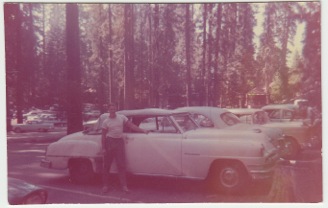
I remember emptying oilcans out of piles of throwaways in back of gas stations for engine oil. I picked oranges in Fillmore, California, with Mexican agricultural laborers, worked as a cabin boy in Sequoia National Park, and lived off the soup kitchens in Los Angeles’ Skid Row. Finally I got tired of being down and out, joined the U.S. Army paratroopers in 1962, trained on howitzers in Oklahoma, and went to jump school in Georgia.
My first time out of the country was to a war in another country that my country invaded. On Easter of 1965, Lyndon Johnson sent the whole 82nd Airborne Division to the Dominican Republic. I spent the last six months of my service as a combat paramedic in the street battles of Santo Domingo, treating civilians and wounded U.S. soldiers shot by snipers.
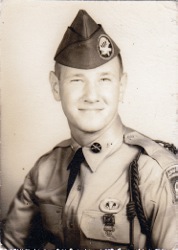
I hated the army and was discharged barely honorably with the same rank I had when I enlisted. (That’s hard to do.) I stayed under my father’s roof on Cape Cod, Massachusetts, for a year building fences and working construction. The first time I knew that I could put a good sentence together was during a creative writing course I took at a junior college in Hyannis. My teacher gave me an F on a short story, then took me aside and demanded that I acknowledge the fact that she was a better writer than I was. She was threatened by my writing.
But I was already planning my escape to Scandinavia. Since I was a kid, I had always remembered that Hans Christian Andersen movie with Danny Kay hanging on the yardarm of a sailing schooner singing “Wonderful, Wonderful Copenhagen.” From that moment on, I had an obsession with living in Denmark. From 1966 to 1970, I attended the University of Copenhagen on the G.I. Bill. For three years I had a student job at the main Danish post office sorting letters, assigned to the letter “H.” I still know by heart nearly all the Danish “H” towns—Hellerup, Hvidovre, Hojste.
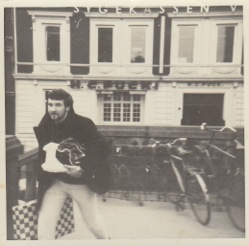
I studied Scandinavian history and European philosophy—totally useless subjects—at university. What I was really doing in Denmark was drinking a lot of Tuborg beer, discovering Danish girls, and writing the Great American Novel about that road trip across the U.S. after high school. Turned out nobody wanted my first travel book. A literary agent rejected it on the phone from the top floor of a swanky hotel while I stood in a phone booth below her, imploringly looking up at her window. That’s as close as I got. Now the manuscript is gathering dust in my garage in Bali. Looking back on those four years, what I should’ve really been doing in Copenhagen was writing a guidebook to the city which I knew like the back of my hand. But my head was in the clouds.
Carrying with them the mystique of eastern lands, returning travelers were showing up on the streets of the Danish capital wearing furry Afghan coats and smoking chillums of killer hash from Himachal Pradesh. With uncanny timing, my grandmother Mama Johnson left all her grandkids $1,000, which I received soon after earning my Danish Candidatus Magistratus degree. I took mine and hit the road to Kathmandu on the Hippie Trail, a rite of passage that was to last a lifetime.
Thirsting for adventure, hardship, and danger, I kept a travel journal from the start. I inserted myself in a skirmish between the Israelis and Palestinians in the Gaza Strip. In Nepal in the early ’70s there was already graffiti on hotel walls from earlier waves of travelers to India. Allen Ginsberg had even been there in the 1960s. I earned money as a rumrunner, buying liquor in “wet” Indian states and selling the bottles for a profit in “dry” states. For six months, I lived on $5 per week in a grass hut in Goa. It was here that I conceived the name Moon Publications after writing 21 hallucinogenic-fueled poems to the moon during one mad moonlit night.
When a rabid puppy bit me, the hospital in Panjim used the old Pasteur treatment to inject serum up and down both sides of my stomach. I came down with hepatitis, yellowing my skin and eyes. As other backpackers stepped over me on the floor of a hotel in Bombay, I heard them mutter, “He’s a goner.” I had already booked a berth on a ship to the Seychelles, staying in the ship’s infirmary over the stern the whole way. The British authorities weren’t letting any bearded hippies on their islands, so unintentionally I was forced to go on to Africa.
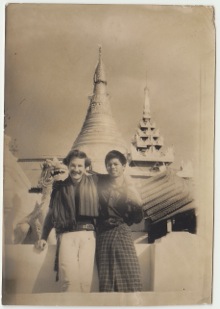
On Lamu, an old Swahili trading post off the coast of Kenya, I lived among the East African Arabs in a stone house with an American girl and a cat named Widget for six months. The island was a paradise—with women in full chadar body coverings, Arab dhows cutting through the turquoise harbor, and immaculate stretches of powdery white-sand beaches. I hitchhiked all over Kenya, Uganda, Tanzania, and Zambia and visited the wild Serengeti, Murchison Falls, and the incomparable Ngoro Ngoro Crater.
I returned to India, camped outside the great erotic temple of Karnak, studied silent meditation with Burmese master Goenka in Dalhousie in northern India, traveled by train everywhere, sleeping in luggage racks with orphans of the rail, our arms wrapped around each other. After traveling all around the subcontinent and East Africa for a year and a half, my grandmother’s inheritance finally ran out in Calcutta. An old army buddy and my brother each sent me another $100. I flew over Burma. In Bangkok, I met an Australian who had just left some teaching jobs in Phnom Penh. He referred me to the pupils who worked in government ministries, so I hitched into Cambodia.